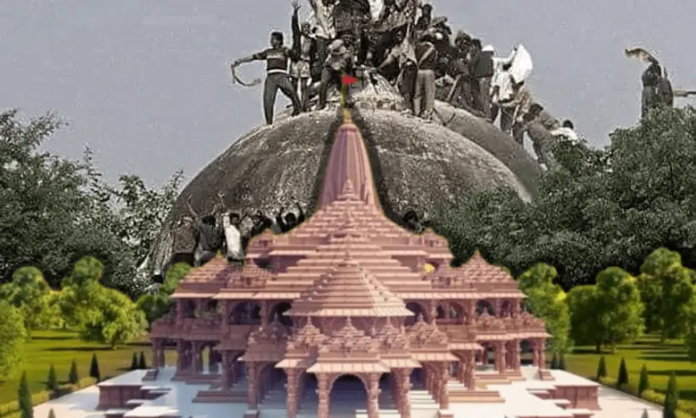The long-anticipated inauguration of the Ram Temple in Ayodhya is set to take place on January 22, marking a historic moment for India. The consecration of Ram Lalla will be presided over by Prime Minister Narendra Modi, with dignitaries such as UP CM Yogi Adityanath, RSS chief Mohan Bhagwat, UP Governor Anandiben Patel, and temple trust president Mahant Nritya Gopal Das in attendance. This momentous event is the culmination of a centuries-old history that has witnessed both religious harmony and discord.
The Mughal Era – 1528
The history of the Ayodhya Ram Mandir traces back to 1528 when, according to popular belief, Mughal ruler Babur’s general Mir Baqi constructed a mosque after demolishing a temple at ‘Ram’s birthplace’ in Ayodhya’s Ramkot. This marked the beginning of a dispute that would echo through the centuries.
British India and Religious Tensions
Religious tensions flared in 1853 during the rule of Nawab Wajid Shah of Awadh, as the Nirmohis, a Hindu sect, claimed that a temple had been destroyed during Babur’s era to make way for the Babri Masjid. In 1885, the British installed a fence, dividing the site into sections for Muslim and Hindu use.
Ram Lalla Idols Inside Babri Mosque – 1949
In 1949, the controversy escalated when idols of Lord Ram appeared inside the Babri Masjid. Legal battles ensued, with a committee led by the Vishwa Hindu Parishad (VHP) aiming to “liberate” the birthplace of Lord Ram and build a temple in his honor.
Ayodhya Court Orders Mosque to be Opened for Hindus – 1986
In 1986, following a plea by Hari Shankar Dubey, the Ayodhya district judge ordered the opening of the mosque gates for Hindu worship. This decision led to the mosque taking on a dual role as a Hindu temple, intensifying the dispute.
VHP Lays the Foundation of Ram Temple – 1989
In 1989, the VHP initiated the construction of the Ram Temple adjacent to the Babri Masjid. The BJP, under the leadership of LK Advani, organized a Rath Yatra expressing support for the temple agitation, creating widespread public rallies and debates.
The Mosque is Demolished – 1992
The most infamous incident in the history of the Ayodhya dispute occurred on December 6, 1992, when the Babri Mosque was demolished by karsevaks, leading to communal riots and significant loss of life.
Godhra Train Fire and Gujarat Riots – 2002
The Godhra train fire in 2002 further fueled tensions, resulting in riots and loss of lives. The Archaeological Survey of India (ASI) conducted a survey in 2003, revealing evidence of a significant Hindu complex beneath the mosque, intensifying disagreements.
Allahabad HC Divides the Disputed Site – 2010
In 2010, the Allahabad High Court ruled that the disputed land should be divided into three parts. The decision faced challenges as both the Akhil Bharatiya Hindu Mahasabha and the Sunni Waqf Board approached the Supreme Court.
Supreme Court Decree and Temple Construction – 2019
On November 9, 2019, the Supreme Court directed the disputed land to be transferred to a trust, leading to the formation of the Shri Ram Janmabhoomi Teerth Shetra. The court also allocated five acres to the Sunni Waqf Board for a mosque, signaling the beginning of temple construction.
Foundation Stone Laying Ceremony – 2020
On August 5, 2020, Prime Minister Narendra Modi laid the foundation stone for the Ram Temple, marking a significant step towards the realization of a cherished dream.
The journey of the Ayodhya Ram Mandir spans centuries, marked by conflicts, legal battles, and communal tensions. The inauguration of the Ram Temple in 2024 is a testament to the resilience of faith and the triumph of the spirit of unity over discord in the historical tapestry of Ayodhya.


